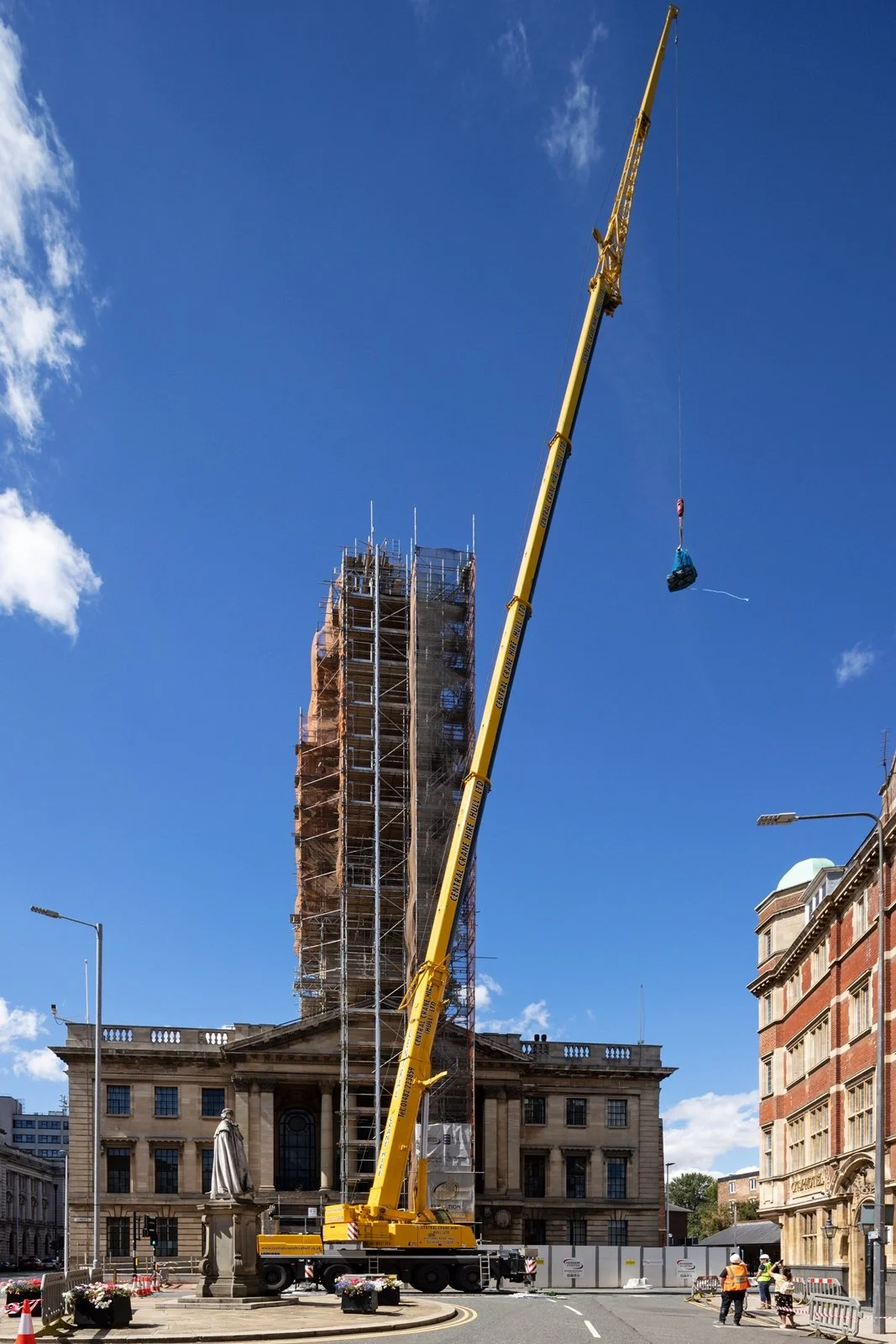Set in stone: Guildhall refurb takes major step forward
By Simon Bristow
The restoration of Hull’s historic Guildhall has taken another major step forward after 12 unique stone putties were lifted into position. They will play an integral part in the return of the building’s famous Timeball, which will take pride of place on the city’s skyline.
The work is being carried out by Yorkshire and Lincolnshire construction firm Hobson & Porter, and is funded by The National Lottery Heritage Fund.
Hobson & Porter has already completed a major re-roofing programme at the Guildhall, and in recent months the company has been restoring the Timeball and its internal mechanism as part of phase two of the project. Improvements and repairs have also been made to the clock tower and its historic stonework.
This month, 12 sections of Portland stone, weighing a total of five tons, were lifted more than 70 metres into the air by crane before being lowered onto a specially built reinforced deck above the clock tower. Each piece of stone has been repaired or replaced by specialist stonemasons from historic building restoration company, Stone Edge.
The team from Stone Edge have now secured them into place ready to support the bowl that the 50kg Timeball will drop into at noon each day in winter, and at 1pm during summer.
Dating back to 1918, the Timeball was a crucial navigational aid chosen for Hull due to its importance as a trading port, and its local connection with clockmaker John Harrison, who in the 1700s triumphed over inventors around the globe to accurately determine longitude at sea. When the Timeball dropped, it enabled navigators to verify and calibrate their maritime chronometers.
Hull Guildhall. Picture by Tom Arran Commercial Photography
Liam Brown, site manager from Hobson & Porter, said: “This was a precarious part of the project. Each of these pieces of stone has either been restored or newly made, and each one had to be lifted and carefully, manually moved into position to sit below the new weathervane, which has been modelled on an 18th century merchant ship, and the new Timeball, which is the highest in the UK.
“This is a crucial and unique feature within Hull’s Maritime Project and will preserve part of the city’s maritime history, so it’s been a real pleasure to oversee this latest successful milestone in the Guildhall’s impressive restoration.”
Councillor Mike Ross, Leader of Hull City Council, said: “It is great to see National Lottery Heritage Fund investing in one of Hull’s historic buildings like this, and exciting to see the final stages of the Timeball restoration project take place. Lifting these pieces of Portland stone was a delicate exercise and it will now enable the work to progress further.
“The Timeball is an important timepiece in Hull’s maritime history, and I am looking forward to seeing the Timeball work once again, 100 years since it last dropped.”
When work completes later this year, the Guildhall Timeball will become one of only a handful of other working Timeballs in the UK, including Greenwich London, Carlton Hill in Edinburgh, two in Kent and one in Brighton.




